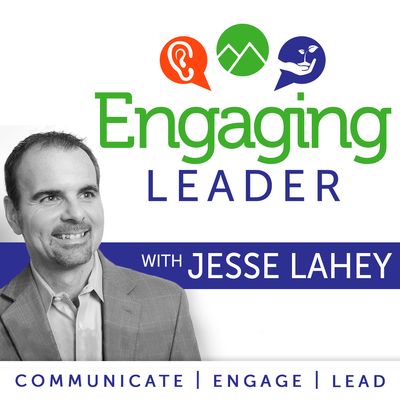Welcome to Engaging Leader, your source for principles to communicate, engage, and lead with greater impact. This podcast will help you inspire trust, passion, and action.
https://engagingleader.com
127: Let’s Get Visual: 6 Engaging Ways to Use Images
Visual communication always gets more attention than written or verbal alone. And with the information and media-overload that everyone now experiences, visual communication is no longer an option when you are trying to influence, lead, or even simply inform people.
You can’t assume that sharing information is enough. Even Steve Jobs, when presenting to already-passionate followers about Apple gadgets they craved to know about, was very deliberate in using visuals to engage them.
You must be intentional to engage your audience for maximum impact. Often leaders feel tired after compiling all the information, and they don’t want to think about how to “get creative” in the way they communicate to their workforce. But without this extra 10% of effort, the communication effort is often a waste of time.
5 Reasons Visual Communication Is a Must
When your message includes the right visuals, people will be more likely to:
NOTICE it. The average person reads between 200 – 300 words per minute, but less than a second to process an image. Eye tracking studies also show that people gravitate immediately to images.
* BELIEVE it. I recommend always telling the truth, but a science shows people will believe even a lie — if it’s accompanied by the right image. To make it more likely that people will believe and trust you, include a helpful image.
* REMEMBER it. The human brain can remember thousands of images, with a surprising level of detail. And according to MIT neuroscience research, images with people in them are the most memorable.
* SPREAD it. For example, on Facebook, photos get 7 times more likes and 10 times more shares than links.
* ACT on it. On the photo-sharing site Pinterest, users don’t just view and share photos, they buy stuff — spending about twice as much as Facebook and Twitter users.
6 Engaging Ways to Use Images
* Graph or diagram. The best time to use a graph or diagram is when this format tells a story. In a quick glance, the viewer should be able to get the main point.
* Short video. Motion pictures were first produced in the late 19th century, and people have been addicted to movies ever since. A 1 – 3 minute video to illustrate a point does wonders for sucking everyone in. However, regardless of how powerful and popular videos are, there are a few reasons why a video platform alone is insufficient to achieve all of your workforce communication objectives.
* Picture. The easiest way to make it visual is to use a large, eye-catching photo — as this post does. Remember, an image that somehow involves human beings will be the most eye-catching and memorable.
* Photo or illustration with a single sentence and a link. The thermometer image above is one example. Another example is the approach used by Clash of Clans to introduce changes to its popular online video game.
* Infographic. This requires more effort to create, but people just can’t help stopping to look at a poster or online piece with a puzzle-like visual that uses data to tell a story.
